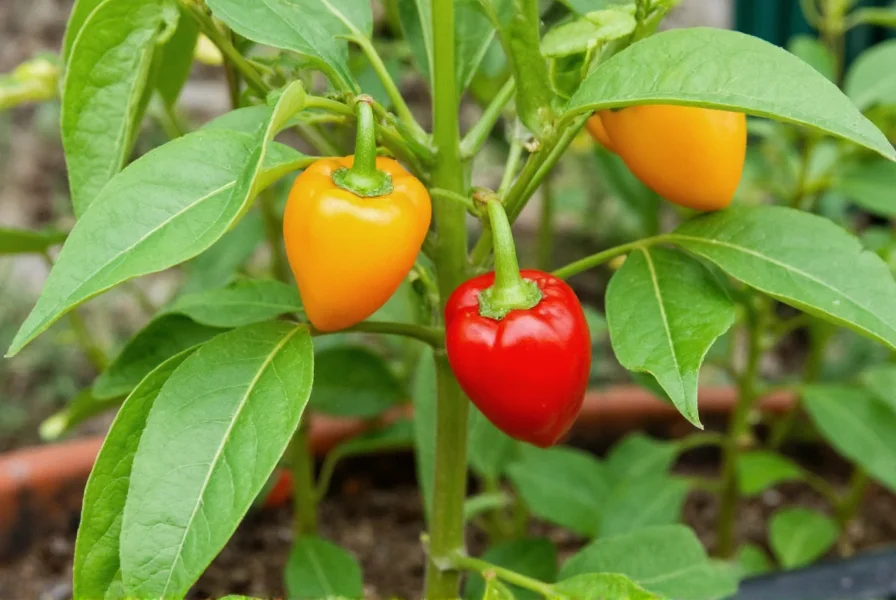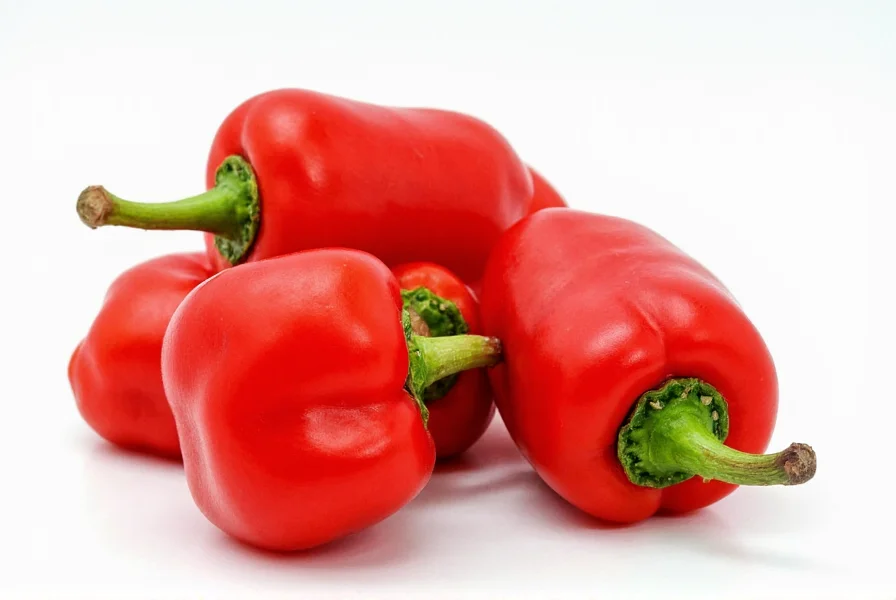When exploring the world of hot peppers, few varieties command as much respect as the scotch pepper. This small but mighty chili has become synonymous with Caribbean cooking, adding both intense heat and complex flavor to countless dishes. Understanding this pepper's unique characteristics helps home cooks and culinary enthusiasts use it effectively while avoiding common pitfalls.
What Exactly Is a Scotch Pepper?
The scotch pepper (Capsicum chinense) is often confused with its close relative, the habanero, but has distinct characteristics that set it apart. Despite the "scotch" name, this pepper actually originated in the Caribbean, not Scotland. The name likely comes from its resemblance to a Scottish tam-o'-shanter hat. In Jamaica and throughout the Caribbean, it's considered a staple ingredient rather than just a heat source.
Botanically classified as Capsicum chinense, scotch peppers grow on compact plants that typically reach 2-3 feet in height. The peppers themselves start green and gradually mature through yellow and orange stages before reaching their final vibrant red, though some varieties remain orange or yellow when fully ripe.
Scotch Pepper Heat Level and Flavor Profile
Understanding scotch pepper heat level is crucial for safe and effective culinary use. These peppers register between 100,000-350,000 Scoville Heat Units (SHU), placing them firmly in the super-hot category. For context, this makes them approximately 12-100 times hotter than a jalapeño (2,500-8,000 SHU) and comparable to habaneros, though scotch peppers often have more variable heat levels.
| Pepper Variety | Scoville Heat Units | Relative Heat (Jalapeño = 1) |
|---|---|---|
| Jalapeño | 2,500-8,000 | 1 |
| Habanero | 100,000-350,000 | 12-40 |
| Scotch Pepper | 100,000-350,000 | 12-40 |
| Ghost Pepper | 800,000-1,000,000 | 100-130 |
What distinguishes scotch peppers from other hot varieties is their complex flavor profile. Beyond the intense heat, they offer distinct tropical fruit notes—often described as having hints of apricot, apple, or even floral undertones. This flavor complexity makes them valuable in recipes where heat alone isn't the goal.
Scotch Pepper vs Habanero: Key Differences
Many people wonder about scotch pepper vs habanero differences, as these peppers look similar and have comparable heat levels. While they belong to the same species (Capsicum chinense), several distinguishing factors exist:
- Shape: Scotch peppers have a more rounded, "bonnet" shape with pronounced ridges, while habaneros are typically more elongated
- Flavor: Scotch peppers tend to have more pronounced fruity notes with less citrus than habaneros
- Heat distribution: Scotch peppers often have more consistent heat throughout the fruit
- Regional variations: Scotch peppers show more color variation (red, orange, yellow, even chocolate-brown)
When substituting one for the other in recipes, consider that scotch peppers may deliver slightly different flavor nuances even when heat levels are similar.
Practical Culinary Uses for Scotch Peppers
Knowing how to use scotch peppers in cooking separates novice cooks from those who truly understand Caribbean flavors. These peppers shine in applications where their heat and flavor can be properly balanced:
- Hot sauces: The foundation of many Caribbean-style hot sauces, often combined with vinegar, fruits, and spices
- Marinades: Adds depth to jerk seasonings and other meat marinades (use sparingly!)
- Stews and soups: Provides background heat in dishes like pepperpot soup
- Chutneys and relishes: Balances sweetness with heat in fruit-based condiments
- Rice and peas: A traditional addition to this Caribbean staple dish
When working with scotch peppers, always wear gloves to protect your skin from capsaicin oils. Never touch your face after handling these peppers, and be extremely careful when cutting them—capsaicin can become airborne and irritate your eyes and respiratory system.

Finding the Right Balance: Scotch Pepper Substitutes
If you can't find authentic scotch peppers or need a less intense option, understanding scotch pepper substitute options is essential. The best alternatives depend on whether you prioritize heat level or flavor profile:
- Habanero peppers: Closest match for heat and flavor, though slightly more citrusy
- Trinidad Moruga Scorpion: For extreme heat lovers (use HALF the amount)
- Serrano peppers: For milder applications (about 1/4 the heat)
- Chipotle peppers in adobo: For smoky flavor with moderate heat
- Paprika + cayenne: Commercial blend for consistent heat without fresh pepper availability
When substituting, remember that dried scotch peppers concentrate the heat—use approximately one-third the amount of dried pepper compared to fresh.
Growing Scotch Peppers at Home
For gardening enthusiasts interested in growing scotch peppers at home, these tropical plants require specific conditions to thrive. They need 90-100 days to reach maturity from seed and prefer warm temperatures (70-90°F) with high humidity.
Start seeds indoors 8-10 weeks before the last frost date, using a seedling heat mat to maintain consistent warmth. These peppers prefer well-draining soil with a pH of 6.0-6.8 and require regular watering without becoming waterlogged. Most home gardeners find that container growing provides better temperature control than in-ground planting outside tropical regions.

Safety Considerations When Handling Scotch Peppers
Proper handling of scotch peppers is non-negotiable for kitchen safety. The capsaicin concentration in these peppers can cause severe skin irritation and temporary blindness if it contacts eyes. Always follow these safety protocols:
- Wear nitrile gloves (latex doesn't provide adequate protection)
- Work in a well-ventilated area to avoid inhaling capsaicin particles
- Use dedicated cutting boards and utensils for hot peppers
- Wash all surfaces with soapy water after preparation
- Have dairy products (milk, yogurt) nearby to neutralize accidental burns
If you experience skin irritation, wash the area with soap and cool water, then apply milk or a specialized capsaicin removal product. For eye exposure, flush with water for 15 minutes and seek medical attention if irritation persists.
Storage Techniques for Maximum Freshness
Learning proper scotch pepper storage techniques extends their shelf life while preserving flavor. Fresh peppers last 1-2 weeks in the refrigerator's crisper drawer when stored in a paper bag (not plastic, which traps moisture). For longer storage:
- Freezing: Whole or chopped peppers can be frozen for 6-8 months
- Drying: Air-dry or use a food dehydrator to create potent dried peppers
- Vinegar preservation: Create hot pepper vinegar infusions
- Oil preservation: Make infused oils (with proper food safety precautions)
Never store cut peppers at room temperature, as they deteriorate rapidly. When freezing, spread peppers in a single layer on a baking sheet before transferring to freezer bags to prevent clumping.
Common Questions About Scotch Peppers
Are scotch peppers and scotch bonnets the same thing?
Yes, scotch peppers and scotch bonnets refer to the same chili variety. The term "scotch bonnet" describes the pepper's distinctive rounded shape resembling a traditional Scottish bonnet (hat). In Caribbean countries, they're most commonly called scotch bonnets, while "scotch pepper" is a more general term used internationally.
How can I reduce the heat of scotch peppers in cooking?
To reduce scotch pepper heat while preserving flavor, remove the white pith and seeds where most capsaicin concentrates. Cooking methods also affect heat perception—adding dairy products like coconut milk or yogurt helps neutralize capsaicin. Acidic ingredients like lime juice can balance heat perception, and sugar helps counteract spiciness. Start with small amounts and gradually increase to achieve your desired heat level.
What's the best way to measure scotch pepper heat accurately?
The most reliable method to gauge scotch pepper heat is the Scoville Organoleptic Test, though this requires laboratory conditions. For home cooks, the practical approach is to start with minimal amounts (1/8 to 1/4 pepper) and gradually increase. Heat can vary significantly between individual peppers, even from the same plant. Taste testing with dairy nearby is the most accessible method for home preparation. Remember that heat perception increases over time, so wait several minutes between taste tests.
Can scotch peppers be used in sweet dishes?
Absolutely. The fruity flavor profile of scotch peppers makes them excellent in sweet applications where heat contrasts with sweetness. They're commonly used in fruit salsas, mango chutneys, and even some dessert recipes like chocolate with a spicy kick. The key is balancing the heat with sufficient sweetness—start with very small amounts (1/8 pepper) and adjust to taste. The combination creates a complex flavor experience that many gourmet chefs prize.











 浙公网安备
33010002000092号
浙公网安备
33010002000092号 浙B2-20120091-4
浙B2-20120091-4